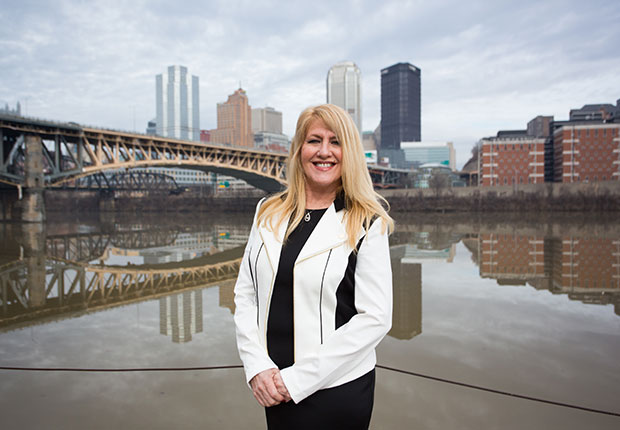AARP Eye Center

By Hilary Appelman
When a friend and financial adviser asked Kelli Robbins about her plans for retirement, she said half-jokingly, “I’m hoping to work until I’m really, really old.”
Maybe her nephews would take over her business and write her a check every month. Or perhaps she would sell the business and live on the proceeds.
“So you’d like to hit a home run in the ninth inning,” the friend responded.
Robbins, president of Pittsburgh-based Contact One Communications, and her brother, the company’s CEO, had never created retirement savings plans for themselves or for their company’s 24 full-time employees.
But Robbins, who also heads a chapter of the National Association of Women Business Owners, changed her mind after testifying in November before a state task force on retirement savings.
“All those years of working so hard, I never really stopped to think about retirement,” said Robbins, 58. “That panel helped me sit back and say for the first time, ‘I need a plan.’ ”
The Task Force on Private Sector Retirement Security, established by State Treasurer Joe Torsella (D), includes legislators from both parties, business and union leaders, and an AARP representative.
The task force is seeking options for more than 2 million workers—almost 44 percent of the state’s private-sector employees—whose employers don’t offer retirement savings plans. “The current landscape just isn’t working for many Pennsylvanians,” Torsella said.
AARP is working with Torsella and state legislators on ways to let all workers participate in automatic savings plans, said Sarah Mysiewicz Gill, senior legislative representative for AARP. “It’s a bipartisan message—helping people save their own money.”
Many small businesses find it too complicated or difficult to offer retirement plans even if they want to, said state Sen. John Blake (D-Lackawanna), a task force member.
“We’ve got a lot of citizens working who aren’t thinking about retirement, working for employers who don’t offer plans,” Blake said. “We have a whole pile of people who are just completely disconnected from the market.”
Nationwide, 61 percent of employees with retirement plans have more than $25,000 in savings, but only 8 percent without access to a plan have that amount, according to a 2016 study.
Other states’ programs
Seven states have decided to create options for employees with no workplace plans. OregonSaves, launched last fall, automatically puts a percentage of workers’ paychecks into a privately managed Roth IRA. Employees can change their contribution rate or opt out.
If more people save for retirement, fewer will be dependent on state services, Blake said.
“It’s hard for people to save—that’s just a reality,” he said. “If we can figure out a way to encourage them to do something, that’s going to be better for them and better for the state.”
A program that businesses can implement with minimal effort is one less thing for a small-business manager or owner to worry about, said Stephen Herzenberg, executive director of the Keystone Research Center in Harrisburg.
A public-private partnership would let the state use its buying power to get better deals than individual workers or small companies could on their own.
State lawmakers may consider bills this year to create savings plans for employees who don’t have them at work.
Hilary Appelman is a writer living in State College, Penn.























































